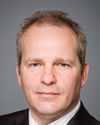Okay. I just want to highlight a few things.
First of all, I'd like to tell you that there has not been an Atlantic salmon farm in North America, but there are three operating coho farms in the States and one in British Columbia.
Of the three in the States, one has been going for a number of years and the two others are in Montana. They'll have their first crop of coho salmon in December. Their technologies are the ones that I have developed.
The one in British Columbia is at Agassiz. It's owned by the Aquilini family. They're also in the process of building a 1,000-tonne farm here in B.C., in Pitt Meadows.
So it's here: land-based salmon farming is here. Not necessarily for Atlantics, which I'd like to explain as I go along, but for coho freshwater, definitely.
I'll go to my presentation on coho. For coho, we can get a 3-kilo fish--from first feeding to 3 kilos--in 12 months, and all in fresh water. You can also do it in brackish waters, if you wish.
The reason we can do this is the biology of the animal. It adapts very well to fresh water and, through photoperiod manipulation, not the use of any hormones or drugs or anything like that, we can get four entries per year. That is what makes it feasible. Through photoperiod of the brood and the chilling of the eggs, every 13 weeks we can supply a crop of eggs.
Also, the growth curve on coho is very dynamic, as you see on one of my slides: basically, it goes from 0.1 gram to 3 kilograms in one year.
Now, the problem with the Atlantics--if there is one--is that we cannot get four supplies of smolts per year from most hatcheries. If they were set up to do it, you probably could. You could get at least three, but getting four would be hard to do. Also, getting disease-free Atlantic salmon is very hard to do. The coho we have here in British Columbia is certified by DFO as disease-free, which makes it more feasible.
Also, the average harvest weight is 5 kilograms for Atlantic salmon, not 3 kilos. We can get a 5-kilogram fish in less than one year from a 100-gram smolt, but to get a 100-gram smolt for Atlantic salmon takes seven or eight months. So for Atlantic salmon, you're looking at a 20-month period instead of 12 months. Mind you, you have the extra 2 kilograms of weight per fish.
The growth curve for Atlantic salmon is very similar to that of coho; on one of my slides, you'll see that it basically goes from 100 grams to 3 kilograms in 42 weeks. This has been documented by the Freshwater Institute. These types of growth rates can be achieved, but still, it's under ideal conditions.
This is not fiction. This is actually happening. In my powerpoint presentation, I sent some renderings of the different equipment. It's not rocket science. It's straight RAS .You have your solid removal. You have your nitrification from ammonia to nitrate. You have your CO2 stripping, and you have your oxygen addition and temperature control.
I also threw in the different stages. You have first-feeding smolt, and the cost for those, roughly, came out to about 77¢. But what I really want to get into is the next stage--when we take them from 30 grams to about 3 kilograms--and the cost there. I didn't show you the layouts of the different stages, but I want to get into the cost of production. In the cost of production, you have your separate hatchery, which takes them to 30-gram smolt, and then you move them over into your smolt stage, your juvenile stage, and your grow-out stage.
All of this has been calculated. It has been backed up by the farms in Montana and the farm in Agassiz. The cost of production is roughly $1.97 per pound for coho. Coho right now is selling for $3.50 to $4 a pound, ungutted, so we see that the margin there is quite good.
Now you might say, okay, it's a niche market, and there's not a huge demand for coho. But each farm is capable of doing 1,000 metric tonnes. With respect to the market, Overwaitea—that's Save-On-Foods—alone has said they'll take 5,000 kilos tomorrow if we can produce them, and that's just here in B.C. The market is growing. There's interest in British Columbia and the United States. I've designed two farms for Ontario, which are going to start construction in the spring. Like I said, it is happening.
You can look at the pie graph here. The big thing about any farming operation is feed costs, which should be roughly 50% of your total cost. On that graph of coho cost of production, for three kilos it's slightly under 50%, but it's close. I believe it came in at 42%. We could probably improve on that a little bit.
The big thing about our technology is the ability to get the power requirements down. In the past for most systems, for a pound of production, say, the kilowatts per hour would be three to four. We're down to 1.1 or 1.2, or in that range, and that doesn't include your heating and cooling.
For heating and cooling, if you look at my table here, it's roughly 13%, and it works out to be about 30¢ per pound. We're working with Andy Wright—I think you've already interviewed him—on capturing that heat, and theoretically we can shave that off by 70%. If we're successful with that, the cost of production would not be $1.97, but $1.76, so we're very well positioned to compete in the marketplace.
Unfortunately, with Atlantic salmon, it's a commodity. Coho salmon is not a commodity as yet. It's still a niche market. With the Atlantic salmon, you're looking at $2.50 at the lowest, up to well over $4 a pound, but you have to base everything, I believe, on the lower price. If the coho ever got down to $2.50 to $2.75 a pound and if we had our costs down to $1.70, we'd still be well positioned in the marketplace to make money.
Now, for electrical use, as I said, we're down to just a little over a kilowatt per pound. In B.C., we're very fortunate to have relatively inexpensive power. But that's all relative. There are areas of New York State where power is even cheaper than B.C. In Ontario, it's the same basic cost per kilowatt hour, so we're very well positioned to compete in that market.
Everybody's talking about the 100-mile diet. If you use fresh water, these farms can be put in urban areas, not necessarily rural ones. They do not have to be near a body of water. With our technology, we can get down to 5% replacement per day. We're also looking at pairing our RAS systems with aquaponics, so that water would be used in the growing of herbs, vegetables, lettuces and so on--basically, anything green.
We're also looking at sequestering the carbon dioxide and using it to grow algae for fish meal replacements, pharmaceuticals, and biodiesels. I'm really excited about the future this has.
In summary, the total energy is, as I said, 40¢ a pound, and 30¢ of that is heating and cooling. This varies where you are in the country. On the west coast here, it's very economical. We can grow these fish in inexpensive structures, like a strong greenhouse or any type of greenhouse. If we move inland, we'd have to put them into a steel building like they did down in Montana, but then their energy is quite inexpensive for heating and cooling because of the insulated building.
The big thing, of course, is capital. In the past, these ventures were quite expensive. You're looking at $12 or $13 per kilo of production. Now we're down to $8.50. If you do the financials on that, your return on investment is over 30% with a 5% depreciation. You can do even better than that with other cost-saving devices that we're still in the research stage on. Still, $8.5 million is a lot of money, and it's not for people who do not have that type of ability to raise that capital.
To sum up, because I know we're on a tight schedule, with closed containment, we can exchange 5% to 20% of the volume per day. We have minimal energy expenditure, in my opinion, with the technology we have today. Capital is roughly $8.50 per kilogram produced. With coho salmon, we're very fortunate to have a disease-free stock. They're also indigenous to B.C. They're also in the Great Lakes, of course, in Ontario.
With coho, first feeding to 3 kilos in 12 months makes your return on cash very quickly. With Atlantic salmon, it's 100 grams to 5 kilos in 42 weeks, but then you have to add 18 weeks on to that for your smolt. One thing about closed containment,and the different averages per year is that we have product available throughout the year, which makes it even more viable.
I went through there pretty quickly, so I hope....









